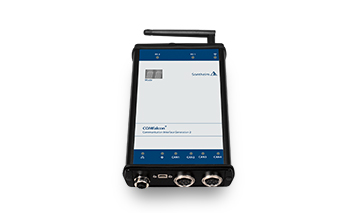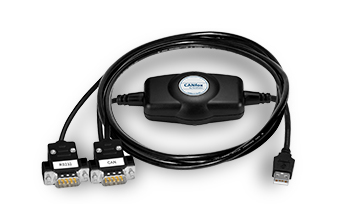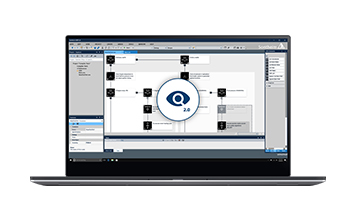Key Features
- Rigid aluminium extruded case
- 1 or 2 galv. isolated CAN interfaces with 1 Mbit/s transfer rate at 90 % bus load
- Hot Plug and Play for a quick and comfortable start
- MT-API for development of own applications
- Optional with error frame detection
- Ideal for use with a PC or notebook
Description
Housing
The device has a fairly rugged housing built of aluminium. Its compact design and resistivity against shock make it very popular in many areas of the automation and automotive industry.
CAN interfaces
There are either one or two galvanically isolated CAN channels available which comply with ISO 11898-2. The transfer rate ranges up to 1 Mbit/s at 90% bus load.
Flexible data processing
Its USB 2.0 interface enables the CANUSB to be used at any laptop, embedded PC or desktop PC. Once you have installed the driver you will benefit from hot plug and play, which is a connection of device to PC without restart.
Microcontroller and firmware update
The Motorola STAR12 and the Philips PDIUSBD12 guarantee a quick data processing.
Both CAN 2.0 A and CAN 2.0 B are supported. CANUSB is suited for numerous operating systems like Windows XP, XP embedded, Vista and 7. All firmware updates can be loaded via USB.
Error frame detection
This feature allows surveillance and monitoring of a CAN network. The CANUSB possesses an own logic for detecting error frames and counting them up in a specific internal memory area. That is used for finding intermittent errors like falsified messages of a CAN participant.
Level measurement
This feature is designed for an analogue measurement of CAN levels. It is used for doing diagnostics at vehicles of all kinds or machines. Erratic level indicate for example short circuits. They are often responsible for data loss.
Programming interface
The CANapi provides all functions for programming own applications. It supports all Sontheim interfaces and several third-party devices which is why we enclose our SiECA132 MT-CANapi with 4 simultaneous handles at every interface dongle
Technical Data
| CPU CAN | Motorola Star12, 16-bit |
| CPU USB | Philips PDIUSB12 |
| CAN | 1× CAN interface acc. to ISO 11898-2, galv. isolated (optional 2× CAN) |
| USB | 1× USB 2.0 |
| CAN connection | 1× 7-pin round plug |
| USB connection | 1× standard USB connector type A |
| Cable USB | 1 m Standard USB |
| Cable CAN | optional 2 m CANUSB cable |
| Max. Data transfer | 1 Mbit/s at 90 % bus load |
| Error frame detection | optional |
| Analog level measurement | integrated |
| LEDs | 2× triple 3 mm LED angled |
| Dimensions (l×w×h) | 100 mm × 57 mm × 32 mm |
| Weight | 166 g |
| Housing | Solid aluminium |
| Operating temperature | 0°C up to +70°C |
| Storage temperature | –20°C up to +85°C |
| Rel. Humidity | 20 % – 90 % non-condensing |
| Power consumption | max. 350 mA at 5 V |
| Power supply | via USB interface |
Related Products

COMfalcon®
Extremely flexible VCI with numerous interfaces and powerful PowerPC. Ideal for use in development, production and service applications.
- 4× CAN interface acc. to ISO 11898
- RS232, RS422, RS 485, K-Line
- WLAN and LAN interface
- Integrated data logging

CANfox®
Compact interface with galvanically isolated CAN- and an RS232-interface on USB 2.0.
- 1× CAN interface acc. to DIN ISO 11898
- 1× RS232 interface
- 1× USB 2.0 interface
- Powerful 32-bit microcontroller

MDT® 2.0
Modular authoring system for the creation of complex diagnostic applications in the automotive sector. Based on ODX and OTX standard and an MCD-3D server.
- ODX support according to ISO 22901-1
- OTX support according to ISO 13209
- MCD-3D Server
- Platform independent

